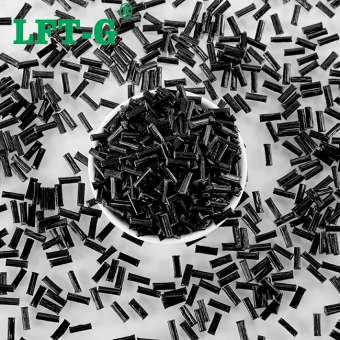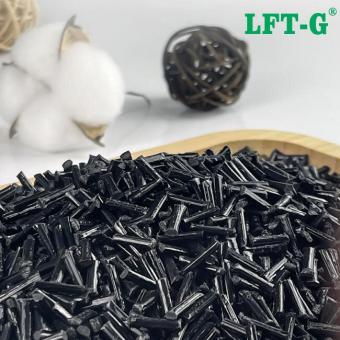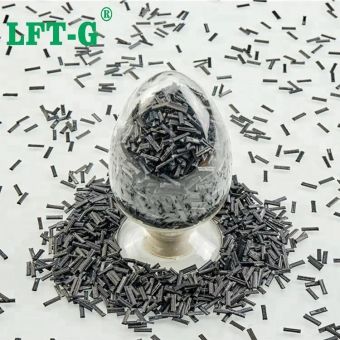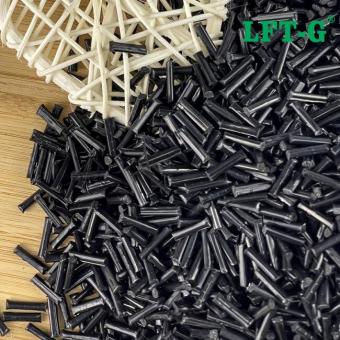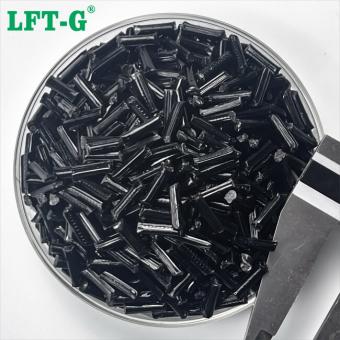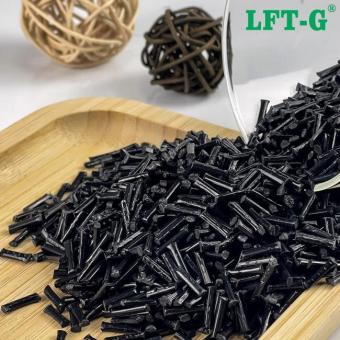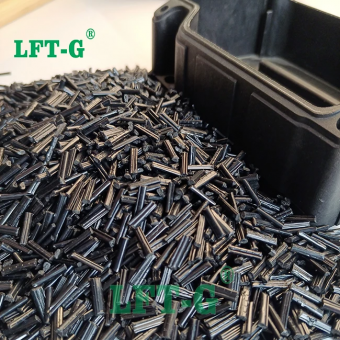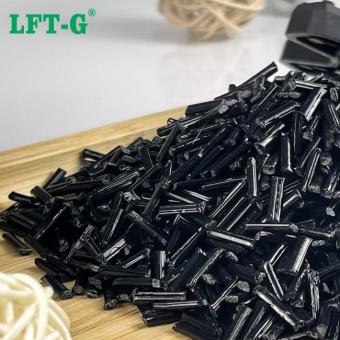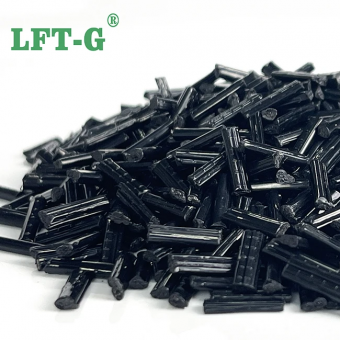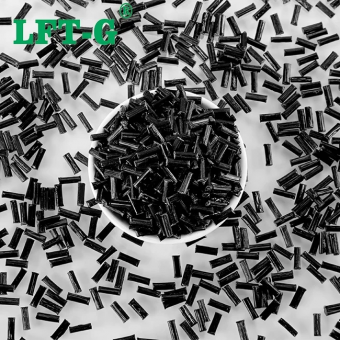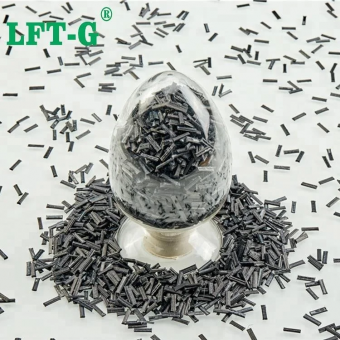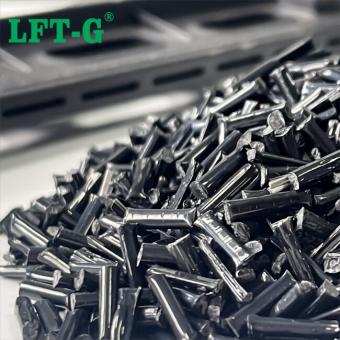Long carbon fiber is a new material with high strength and high modulus and excellent mechanical properties. It is a microcrystalline graphite material obtained by carbonization and graphitization of organic fibers. Its specific gravity is less than 1/4 of steel, and its strength is higher than that of steel. Corrosion resistant, high modulus, no melting. And a variety of resin substrates after impregnation extrusion molding into pellets, long carbon fiber polymer. Can be used for direct molding products. In recent years, it has been widely used in aerospace, mechanical and electronic chemicals.
-
Reinforced PPS Long Carbon Fiber Granules For High Demanding ApplicationsPPS is a high-performance, tough engineering plastic with great dimensional and thermal stability, as well as a wide operating temperature range of up to 260 °C and good chemical resistance.
- PPS long glass fiber composite
- PPS engineering plastic supplier
- PPS for electronic connectors & housings
- PPS for industrial structural components
- PPS injection molding material
- pps cf
Tags :
-
Reinforced Nylon 1,2 Long Carbon Fiber Granules For High Demanding ApplicationsPa12 cf is a type of engineering plastic that consists of polyamide 12 (pa12) compounds reinforced with carbon fibers. It is a high-performance material that has many advantages over pure nylon 12, such as higher strength, stiffness, thermal resistance, chemical resistance, and electrical properties. Pa12 gf is widely used for various applications in different industries, such as automotive, aerospace, medical, electrical, and industrial.
- carbon fiber-reinforced plastic
- carbon fill pa plastic injection moulding supplier
- lightweight composite
- flammability properties
- nylon 66 cf30
- thermoplastic carbon fiber
Tags :
-
Reinforced Nylon 6 Long Carbon Fiber Pellets For Auto PartsNylon 6 is a suitable material for injection molding. The resulting molded nylon parts possess great strength, as well as chemical and temperature resistance. When molding nylon 6, the material is sometimes injected with a specified amount of carbon fibers (usually between 20% and 60%) to boost its tensile strength. Carbon fibers also improve stiffness.
- High-performance PA66 composite
- Industrial plastic components
- Reinforced PA6 plastic
- Lightweight reinforced polyamide
- PA6 structural components for machinery
- High-strength industrial plastic parts
Tags :
-
High Toughness Copo Polypropylene Carbon Fiber Filled Thermoplastic PelletsCombining the flexibility of Polypropylene and the properties of carbon fiber, PP-CF Compound material increases performance and brings reliability to the market.
- metal replacement solutions
- long fiber composites
- types of fibers in composite materials
- carbon reinforced plastic
- copolymer vs homopolymer polypropylene
- pp cf30
Tags :
-
High Strength Polypropylene Carbon Fiber Filled Thermoplastic PelletsThrough carbon fiber reinforcement, can improve the strength of polypropylene materials, thermal deformation temperature and dimensional stability, expand the application of polypropylene materials.
- carbon fiber composites
- difference between copolymer and homopolymer
- long carbon fiber reinforced polypropylene manufacturers
- carbon fiber reinforced plastics
- what is homopolymer
- lft g for automobile market
Tags :
-
Reinforcing PEEK with Long Carbon Fibers High Strength CompoundsOur PEEK (Polyether Ether Ketone) long carbon fiber composite material is an advanced high-performance thermoplastic engineered for applications requiring exceptional mechanical properties, chemical resistance, and thermal stability. By reinforcing PEEK with long carbon fibers, this composite achieves outstanding strength, stiffness, and durability, making it an ideal choice for demanding industrial applications.
- Plastic PEEK with filler
- carbon fibre material properties
- carbon reinforced composites
- thermoplastic cfrp
- china carbon fiber plastic
- plastic compounds
Tags :
-
Advanced engineering thermoplastic Polyamide 12 Long Carbon FiberOur PA12 long carbon fiber reinforced composite material is an advanced engineering thermoplastic designed to meet high-performance application requirements. By incorporating long carbon fibers into the polyamide 12 (PA12) matrix, this composite achieves exceptional strength, impact resistance, and lightweight properties while maintaining superior dimensional stability and chemical resistance.
- Plastic nylon with filler
Tags :
-
High Strength Plastic Copo PP CFRTR Carbon Fiber Filler Injection MoldingLFT-G's high-performance copolymer polypropylene (PP) long carbon fiber composite is engineered to deliver outstanding mechanical strength, impact resistance, and dimensional stability. This material is ideal for applications requiring lightweight yet durable solutions, offering superior performance compared to conventional short fiber-reinforced PP.
- PP CF 30
Tags :
-
Flame Retardent V0 PPS Long Carbon fiber PelletsOur PPS Long Carbon Fiber Reinforced Composite is a high-performance engineering thermoplastic designed for injection molding applications requiring exceptional strength, thermal stability, and chemical resistance. This advanced material offers outstanding mechanical properties and dimensional stability, making it ideal for demanding industries such as automotive, aerospace, electronics, and industrial equipment.view more
-
High Impact Resistance Polyamide 66 Carbon Fiber filledThe main advantages of nylon 6 are its stiffness and resistance to abrasion. Moreover, this material has excellent impact strength, wear resistance, and electrical insulating properties.
- pa6 vs pa66
- pa66 30 fv
- pa66-cf30 battery
- pa66 cf30 material
- pa66 filament
- nylon factory china
Tags :
-
LFT Carbon Fiber Filler Pa6 Polyamide Composites ResinThe most notable physical property of polyamide is its excellent wear resistance due to its low coefficient of friction created by its self-lubricating properties.
- pa6 plastic material
- nylon pa6 plastic material
- difference between pa6 and pa66
- pa6 china
- pa6 price per kg
- nylon reinforced
Tags :

 e-mail
e-mail English
English français
français Deutsch
Deutsch русский
русский italiano
italiano español
español português
português العربية
العربية 日本語
日本語 한국의
한국의 中文
中文












